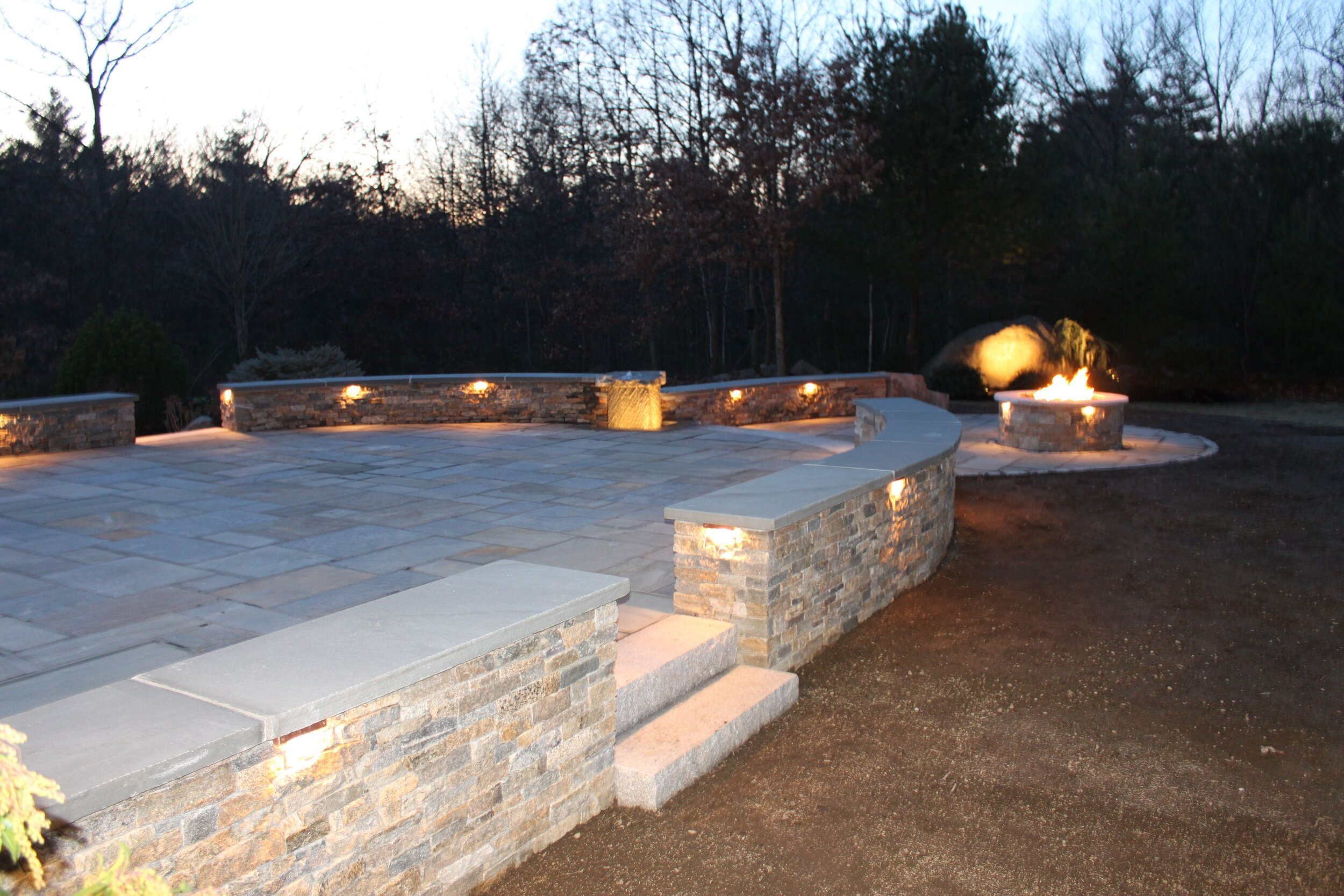Using Expert Masonry to Liven Up Steps and Staircases in Amherst, and Hollis, NH, Areas
Nothing is worse for your home’s curb appeal than crumbling, unsafe steps and staircases. Upgrading these features will not only enhance safety but add beauty to your landscape. Here are our tips for using expert masonry to liven up steps and staircases in Amherst and Hollis, NH, areas.
Related: OUR TOP MASONRY RECOMMENDATIONS FOR YOUR AMHERST, NH, LANDSCAPE PROJECT
Choosing the Right Materials
With steps (a few steps) and staircases (many steps), you have two choices: natural stone or manufactured stone (concrete pavers and steps made to resemble stone). There is no one perfect choice for every application. You may find huge variations in materials cost, installation cost, availability of styles and colors and it can be challenging to settle on one material.
When choosing the right materials for steps or staircases, first think about function. Always choose a surface that will remain as non-slip as possible. Higher-end manufactured stone steps often come with a non-slip finish. If you prefer natural stone, opt for a rougher finish rather than a smooth, polished finish to increase traction.
Another thing to consider is durability. Natural stone has, of course, been used for millennia and there are countless examples of stone steps and staircases that have stood the test of time. Again, choosing the right stone is key: softer stones like flagstone could have a tendency to absorb water, which makes them susceptible to the freeze-thaw cycle. Repeated freezing and thawing can lead to cracking or flaking which can cause a tripping hazard. Harder stone, such as New Hampshire’s native granite, is a better option (as long as it comes with a rougher finish for surefootedness).
Your Front Entry
Since many people enter their homes through the garage or a side door, the steps or staircase leading to your front entry may not be seeing much use, but they are still important for visitor safety and to present a welcoming facade. Updating your front entry could have a significant impact on your curb appeal.
If there is existing stone on your home’s facade - whether it’s the foundation, siding, or even an exterior chimney - then choose stone for your steps or staircase that will complement these materials. If your home’s foundation is simple poured concrete and there is no other stonework on the home’s exterior, this is a great opportunity to tie your new entry and garden steps and staircases in with the home. Cladding the foundation in a natural stone or manufactured stone veneer will integrate the home with the landscape.
Garden Steps
Depending on the slope, garden steps can either be large uncut stone slabs set partially atop one another in a relaxed fashion to form a gentle elevation change. This is a great solution for a naturalistic landscape set on a gentle slope. Even though the stone slabs aren’t set precisely they are large enough to offer a surefooted traverse, making for a safe and functional landscape element that enhances your experience of your outdoor spaces. These new steps will quickly merge into the landscape with the addition of some ground covers for a “been there forever” look whether your home is historical or brand new.
For steeper slopes, the best (and safest) option is to use cut stone steps and set them precisely, to form a safe and beautiful staircase.
Gentle elevation changes don’t always require the addition of a handrail, but you’ll want to ensure that people have a secure hand grip on steeper slopes. Setting more steeply angled steps into an attractive masonry retaining wall is one solution.
Related: 3 MASONRY IDEAS FOR LOW-MAINTENANCE LANDSCAPES IN MILFORD AND AMHERST NH AREAS

